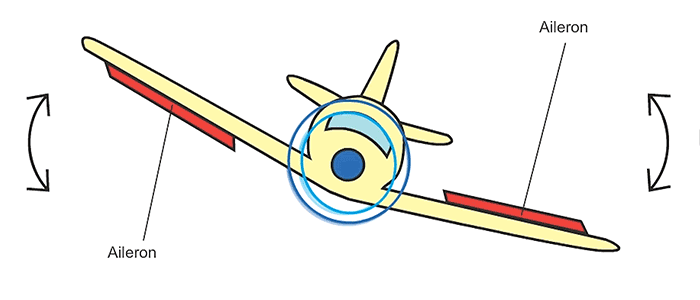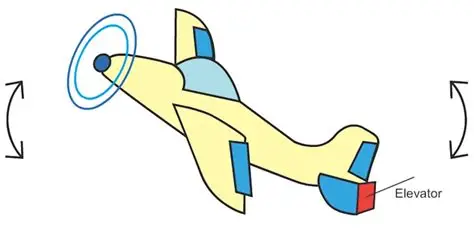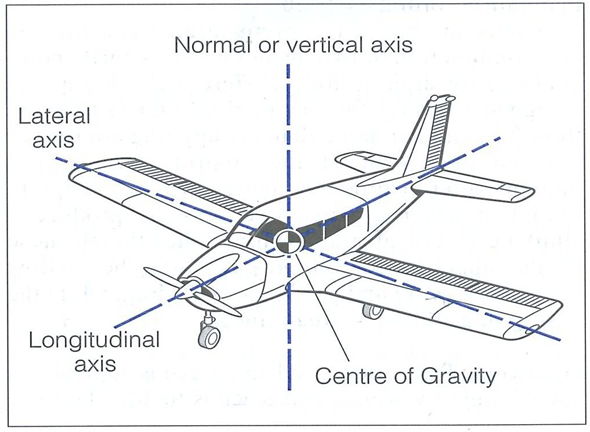3 axis of flight
ROLL
roll is rotation about the longitudinal (horizontal) axis to bank the plane left or right. it’s controlled by turning control column left or right, which then lifts or lowers each aileron on the wings in opposition. by lifting one and dropping the other, there is more lift on the raised aileron, so the plane will bank to the side of that of the dropped aileron. rolling is an act of centripetal motion, as the centripetal force of the aircraft acts towards the centre of a circular path.
to roll left -
the control column is pushed to the left
the right aileron lifts and the left aileron drops, so there is more lift on the right wing
this means the aircraft banks left, rolling around the horizontal axis to turn left
to roll right -
the control column is pushed to the right
the left aileron lifts and the right aileron drops, so there is more lift on the left wing
this means the aircraft banks right, rolling around the horizontal axis to turn right

PITCH
pitch is rotation about the latitude (horizontal) axis to pitch the plane up or down. it’s controlled by turning control column up (to pitch up) and down (to pitch down), which then lifts or lowers the elevators on the horizontal stabilisers. the elevators move together, unlike the ailerons which move in opposite directions to each other. elevators work by varying the amount of lift created at the tailplane, dictating whether the tailplane is higher or lower than the nose, and therefore whether the aircraft goes up or down.
to pitch up -
the control column is pulled towards the pilot
the elevator rises, so there is less lift at the tailplane. the tailplane drops to be lower than the nose
therefore the plane is at an upwards trajectory and will move upwards
to pitch down -
the control column is pushed away from the pilot
the elevator lowers, so there is more lift at the tailplane. the tailplane rises to be above the nose
therefore the plane is at a downwards trajectory and will move downwards

YAW
yaw is rotation about the normal (vertical) axis to turn the plane left or right. it’s different to ‘roll’ in the sense that the plane does not need to bank to turn, and because yaw is not an example of centripetal motion. it’s controlled using rudder pedals to rotate the aircraft left or right, which will move the rudder, located on the vertical stabiliser, in the same way, creating horizontal lift at the other side of the rudder which then rotates the tailplane in the given direction.
to yaw left -
the left rudder pedal is pushed
the rudder will come over to the left, which creates horizontal lift on the rudder’s left side
this rotates the plane around the vertical axis, turning to the plane to face the left
to yaw right -
the right rudder pedal is pushed
the rudder will come over to the right, which creates horizontal lift on the rudder’s right side
this rotates the plane around the vertical axis, turning to the plane to face the right

